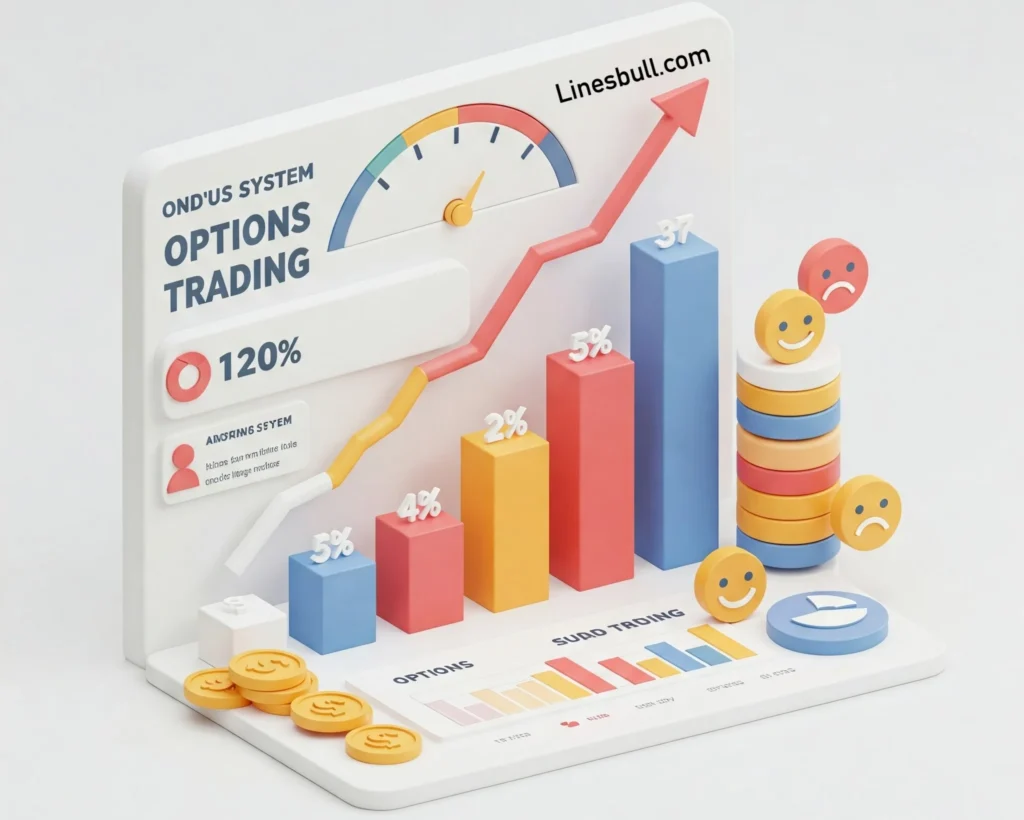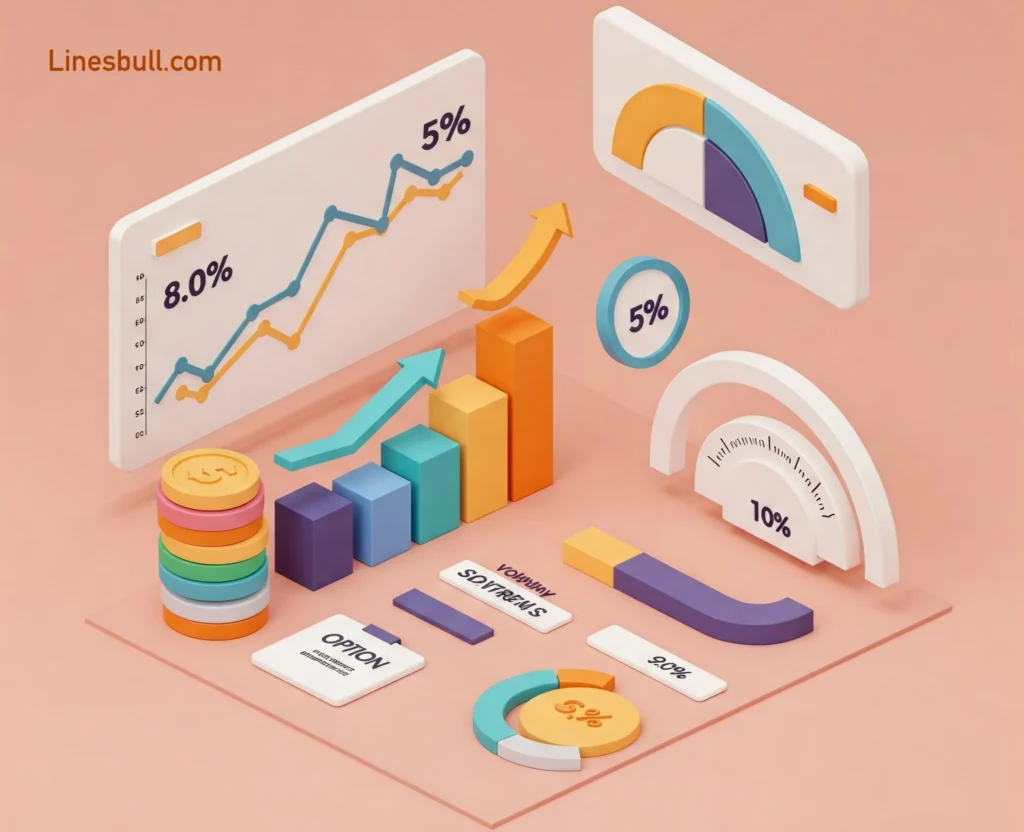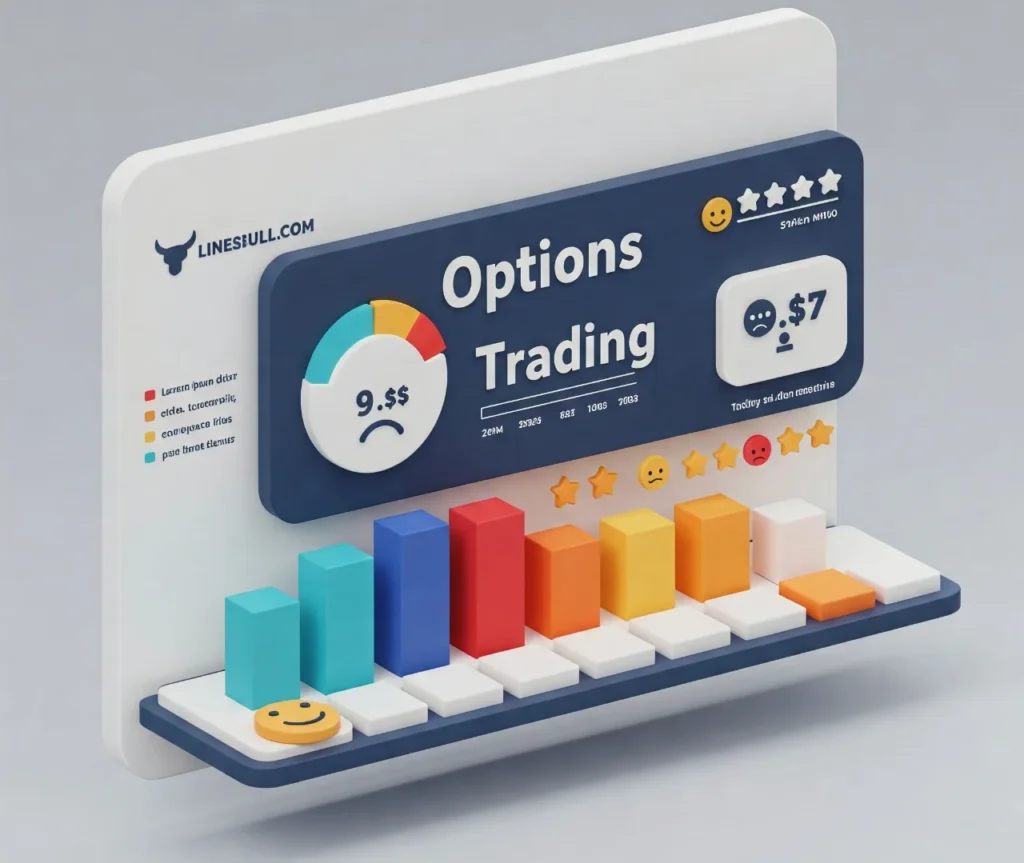Introduction
What is The Smart Way To Learn Options Trading? Options trading is one of the most powerful financial instruments available to traders and investors. It provides flexibility, leverage, and hedging capabilities that traditional stock trading cannot match. But where should you start? This article will guide you through the best ways to learn options trading, from understanding the basics to mastering advanced strategies.
Understanding the Basics of Options Trading
What Are Options?
Options are financial contracts that give traders the right, but not the obligation, to buy or sell an asset at a predetermined price before a specified expiration date. They are primarily used for hedging, speculation, and generating income.
Call vs. Put Options
- Call Options: Give the buyer the right to purchase an asset at a fixed price.
- Put Options: Give the buyer the right to sell an asset at a fixed price.

Why Learn Options Trading?
Advantages Over Stock Trading
Options provide greater flexibility compared to stocks. You can profit from rising, falling, and even sideways markets.
Potential for High Returns
With a small investment, options can yield substantial profits due to their leverage.
Call vs. Put Options: Comparison Table
| Feature | Call Option | Put Option |
|---|---|---|
| Definition | A contract giving the buyer the right (but not the obligation) to buy an asset at a predetermined price before expiration. | A contract giving the buyer the right (but not the obligation) to sell an asset at a predetermined price before expiration. |
| Buyer’s Expectation | The price of the asset will rise. | The price of the asset will fall. |
| Seller’s Expectation | The price of the asset will stay the same or fall. | The price of the asset will stay the same or rise. |
| Profit Scenario for Buyer | Profits when the asset price goes above the strike price. | Profits when the asset price goes below the strike price. |
| Profit Scenario for Seller | Profits when the asset price stays below the strike price (collects premium). | Profits when the asset price stays above the strike price (collects premium). |
| Risk for Buyer | Loss is limited to the premium paid. | Loss is limited to the premium paid. |
| Risk for Seller | Loss can be unlimited if the asset price rises significantly. | Loss can be unlimited if the asset price falls significantly. |
| Example | An investor buys a Call Option for Apple stock at $150 strike price. If Apple’s price rises to $170, they can buy at $150 and sell at $170 for a profit. | An investor buys a Put Option for Tesla stock at $200 strike price. If Tesla’s price drops to $180, they can sell at $200 and buy back at $180 for a profit. |
| Best for | Bullish investors expecting a price increase. | Bearish investors expecting a price decrease. |
Step-by-Step Guide to Learning Options Trading
Start with Basic Terminology
Understanding key terms like strike price, expiration date, intrinsic value, and time decay is crucial.
Understand Market Dynamics
Learn how stock movements, economic events, and market sentiment affect options pricing.
Learn About Option Pricing and Greeks
Option pricing depends on factors like volatility, interest rates, and time decay. The “Greeks” (Delta, Gamma, Theta, Vega) help traders measure risk and rewards.
Can I Start Option Trading with 5000 Rupees?
you can start option trading with ₹5000, but there are some limitations. In India, the margin requirement for option trading depends on the type of trade:
- Buying Options (Low Cost) – You can buy Call or Put options with a small capital like ₹5000. However, deep in-the-money or highly liquid contracts may require more.
- Selling/Writing Options (High Margin Required) – Selling options requires a higher margin, often much more than ₹5000.
Is Option Trading Better Than Stocks? – Advantages & Disadvantages
| Advantages of Option Trading ✅ | Disadvantages of Option Trading ❌ |
|---|---|
| Leverage – Control a large position with a small investment. | Time Decay – Options lose value over time, especially if out-of-the-money. |
| Flexibility – Can profit in bullish, bearish, and neutral markets. | Higher Complexity – Requires knowledge of options pricing, Greeks, and market trends. |
| Lower Capital Requirement – Buying options is cheaper than buying stocks. | High Risk – If the market moves against you, 100% of the investment can be lost. |
| Hedging Opportunity – Can protect a stock portfolio from market crashes. | No Ownership – Unlike stocks, options do not give company ownership or dividends. |
| Potential for Quick Profits – Options can generate high returns in a short time. | Liquidity Issues – Some stock options have low trading volume, making them hard to sell. |
Do You Need ₹25,000 to Trade Options?
It depends on whether you’re buying or selling options:
- Buying Options – No, you do not need ₹25,000. You can buy options with a much lower amount, even ₹5000-₹10,000, depending on the contract price.
- Selling (Writing) Options – Yes, selling options requires a high margin, often exceeding ₹1 lakh, as brokers need collateral to cover potential losses.
What Is the Trick for Option Trading?
Successful option traders use a mix of strategy, risk management, and technical analysis. Here are some key tricks:
1️⃣ Trade with a Plan – Don’t trade emotionally; follow a tested strategy.
2️⃣ Choose Liquid Options – Stick to Nifty, Bank Nifty, and top stocks for easy entry/exit.
3️⃣ Use Stop Loss – Protect your capital by setting a stop loss on every trade.
4️⃣ Avoid Holding Till Expiry – If the trade isn’t working, exit early instead of hoping for a recovery.
5️⃣ Learn Option Greeks – Understand Delta, Theta, Vega, and Gamma to predict price movements.
6️⃣ Follow Market Trends – Use support & resistance levels and technical indicators (RSI, MACD).
7️⃣ Manage Position Sizing – Don’t risk more than 2-5% of your capital in a single trade.
Benefits of Call and Put Options
| Benefit | Call Option | Put Option |
|---|---|---|
| Leverage | Allows investors to control a large number of shares with a small investment. | Enables investors to benefit from declining asset prices with limited capital. |
| Limited Risk | The maximum loss is the premium paid. | The maximum loss is the premium paid. |
| Hedging Tool | Can be used to lock in a lower purchase price for a stock. | Useful for hedging against potential stock declines. |
| Flexibility | Allows investors to speculate on upward movements without owning the stock. | Allows investors to profit from falling stock prices without short selling. |
Choosing the Right Broker of Option Trading
Selecting the right broker is crucial for successful options trading. A good broker should offer a user-friendly platform, competitive fees, and strong customer support. Consider the following factors when choosing an options broker:
- Trading Fees: Look for brokers with low commissions and no hidden charges.
- Platform Usability: Ensure the trading platform is intuitive and offers advanced charting tools.
- Educational Resources: Some brokers provide webinars, tutorials, and demo accounts to help beginners.
- Customer Support: Responsive customer support can be essential in volatile trading situations.
- Available Assets: Check if the broker provides a variety of options contracts and underlying assets.

Top Brokers for Beginners
Here are some of the best brokers for beginners entering the options trading world:
| Broker Name | Key Features |
|---|---|
| TD Ameritrade | ThinkorSwim platform, educational resources, no commission on online trades. |
| E*TRADE | User-friendly platform, paper trading for practice, extensive research tools. |
| Robinhood | Zero commission, simple mobile app, great for beginners. |
| Interactive Brokers | Low fees, advanced trading tools, global market access. |
| Fidelity | No commission on options trading, excellent customer service, strong research tools. |
Popular Options Trading Strategies
Top 2 Options Trading Strategies
| Strategy Name | Description |
| Covered Call | This strategy involves owning the underlying asset and selling call options against it. It generates income while limiting upside potential. |
| Iron Condor | A neutral strategy that involves selling a put spread and a call spread to profit from low volatility. It minimizes risk while capturing small price movements. |
Can I Learn Options Trading on My Own?
you can learn options trading on your own! With the right resources, dedication, and practice, you can understand how options work and develop profitable trading strategies. Start by studying online courses, reading books, watching YouTube tutorials, and using trading simulators. Begin with basic concepts like calls, puts, strike prices, and expiration dates before diving into advanced strategies. Paper trading (using demo accounts) helps you gain experience without risking real money.
Which Technique Is Best for Options Trading?
The best options trading technique depends on your risk tolerance and market knowledge. However, some widely used and effective techniques include:
✅ Covered Calls – Best for conservative traders; selling calls on stocks you own for extra income.
✅ Iron Condors – A neutral strategy that profits from low volatility.
✅ Credit Spreads – Limits risk while collecting premium income.
✅ Straddle & Strangle – Best for high volatility; profiting from big price swings.
Why Do 90% of Options Traders Lose Money?
Most options traders lose money because they:
❌ Lack a solid strategy – They trade randomly without proper planning.
❌ Ignore risk management – Betting too much on one trade leads to big losses.
❌ Misunderstand time decay – Options lose value over time, which many traders underestimate.
❌ Overtrade – Trying to make quick profits without patience results in losses.
❌ Fail to adapt to market conditions – Market movements change, and sticking to one rigid strategy doesn’t always work.
Track of some of the most popular options trading strategies.
| Strategy | Type | Market Outlook | Risk Level | Profit Potential | Best for Traders |
|---|---|---|---|---|---|
| Covered Call | Income | Neutral/Bullish | Low | Limited | Beginners, Income Seekers |
| Protective Put | Hedging | Bearish | Low | Unlimited | Risk-Averse Investors |
| Straddle | Volatility | Highly Volatile | High | Unlimited | Experienced Traders |
| Strangle | Volatility | Highly Volatile | High | Unlimited | Speculators |
| Iron Condor | Income | Low Volatility | Moderate | Limited | Advanced Traders |
| Butterfly Spread | Income | Low Volatility | Moderate | Limited | Options Strategists |
| Bull Call Spread | Directional | Bullish | Moderate | Limited | Moderate-Risk Traders |
| Bear Put Spread | Directional | Bearish | Moderate | Limited | Moderate-Risk Traders |
| Calendar Spread | Income | Neutral | Moderate | Limited | Experienced Traders |
| Iron Butterfly | Income | Low Volatility | High | Limited | Advanced Traders |

Is Option Trading Good in India? – Pros & Cons
| Pros ✅ | Cons ❌ |
|---|---|
| Highly Liquid Market – Nifty, Bank Nifty, and major stocks have high liquidity. | High Risk – Many beginners lose money due to lack of knowledge and experience. |
| Low Capital Requirement – Buying options requires much less money than buying stocks. | Time Decay – Options lose value as they approach expiry. |
| Profit in Any Market Condition – Can earn in bullish, bearish, and sideways markets. | Complex Strategies – Requires understanding of concepts like Option Greeks, spreads, and hedging. |
| High Return Potential – Small investments can lead to large profits due to leverage. | Brokerage & Taxes – Higher costs compared to regular stock trading. |
| Hedging Tool – Investors can use options to protect their stock portfolio from losses. | Emotional Trading – Traders often make impulsive decisions due to market volatility. |
Conclusion
Learning options trading requires patience, education, and practice. By leveraging the right resources, understanding market dynamics, and developing a sound strategy, you can become a successful options trader. Remember to manage risks wisely and never stop learning!
FAQs
Is options trading risky for beginners?
Yes, but with proper education and risk management, beginners can trade safely.
How long does it take to learn options trading?
It depends on the individual, but 3-6 months of consistent learning and practice is a good estimate.
Can you make a living from options trading?
Some traders do, but it requires skill, discipline, and a solid trading plan.
What is the best options trading strategy for beginners?
Covered calls and cash-secured puts are beginner-friendly strategies.
Where can I practice options trading for free?
Platforms like ThinkorSwim by TD Ameritrade and Interactive Brokers offer paper trading accounts.


